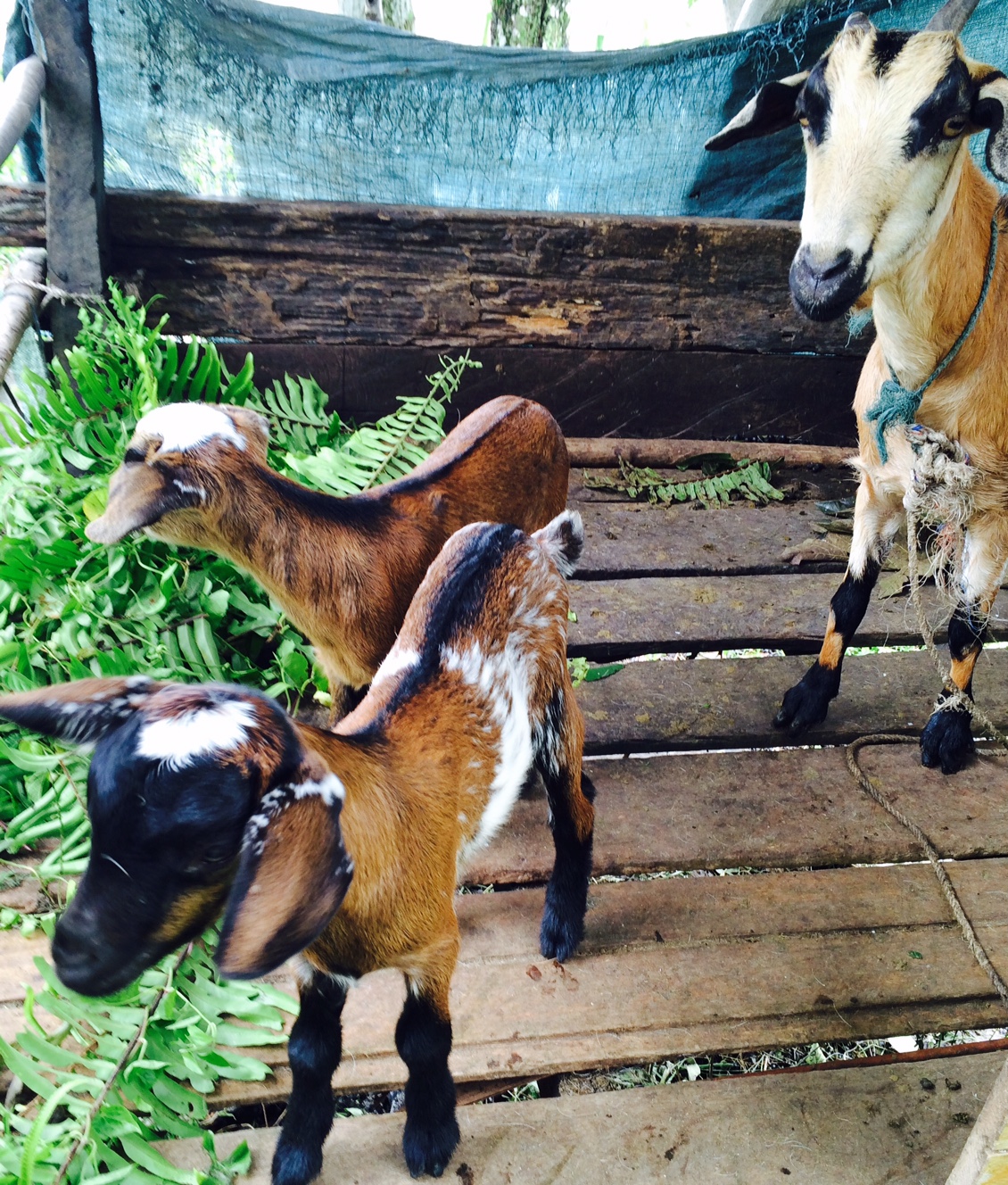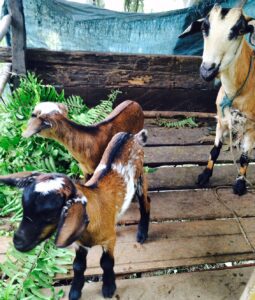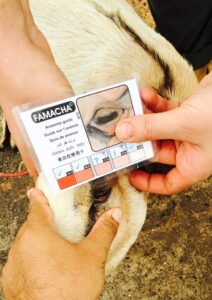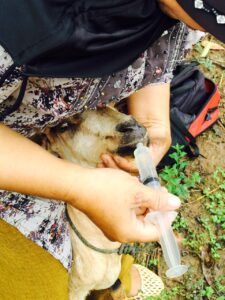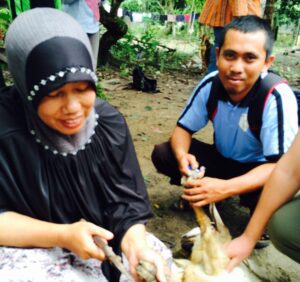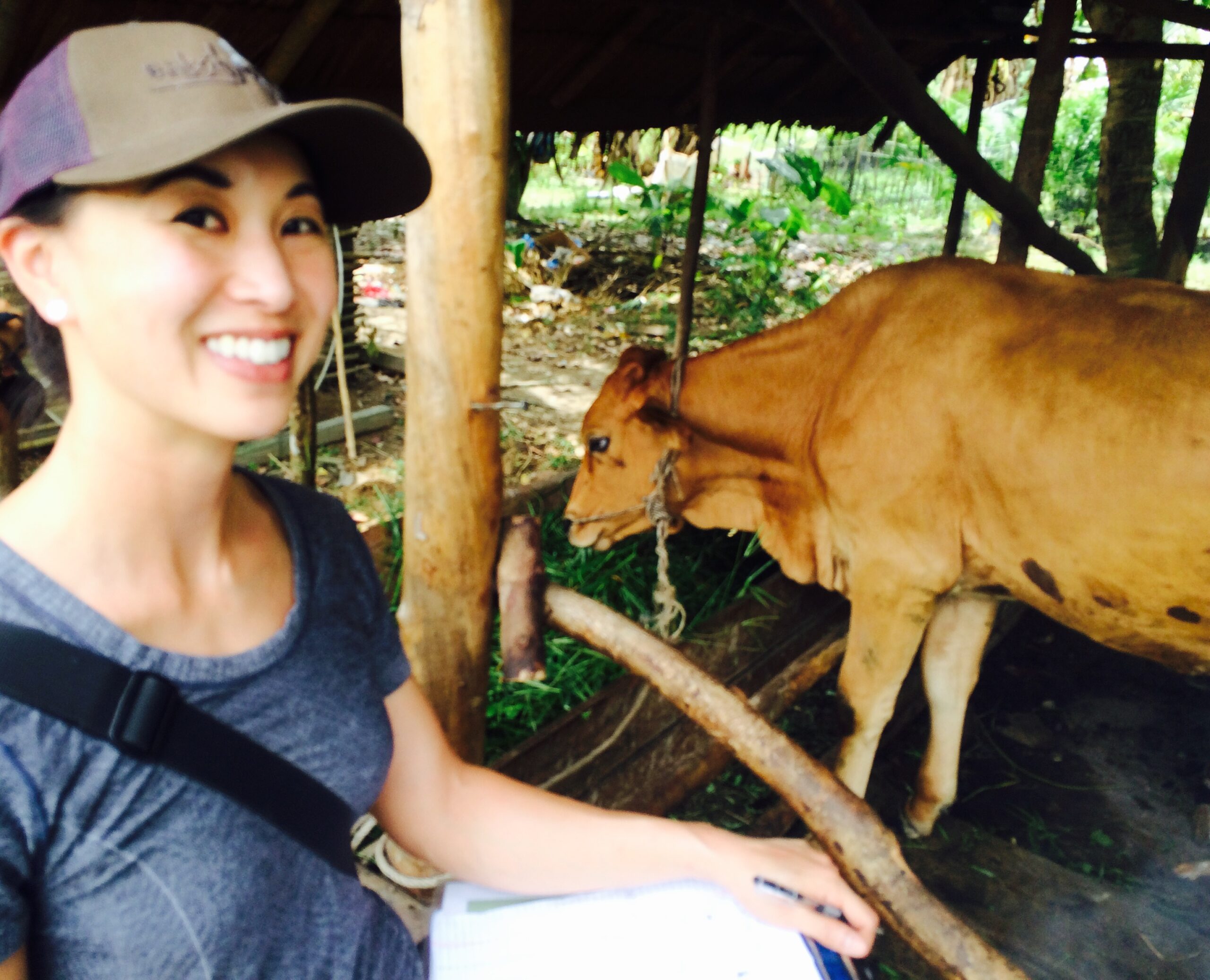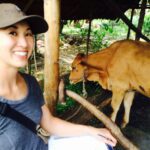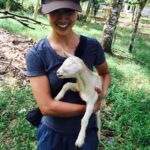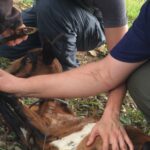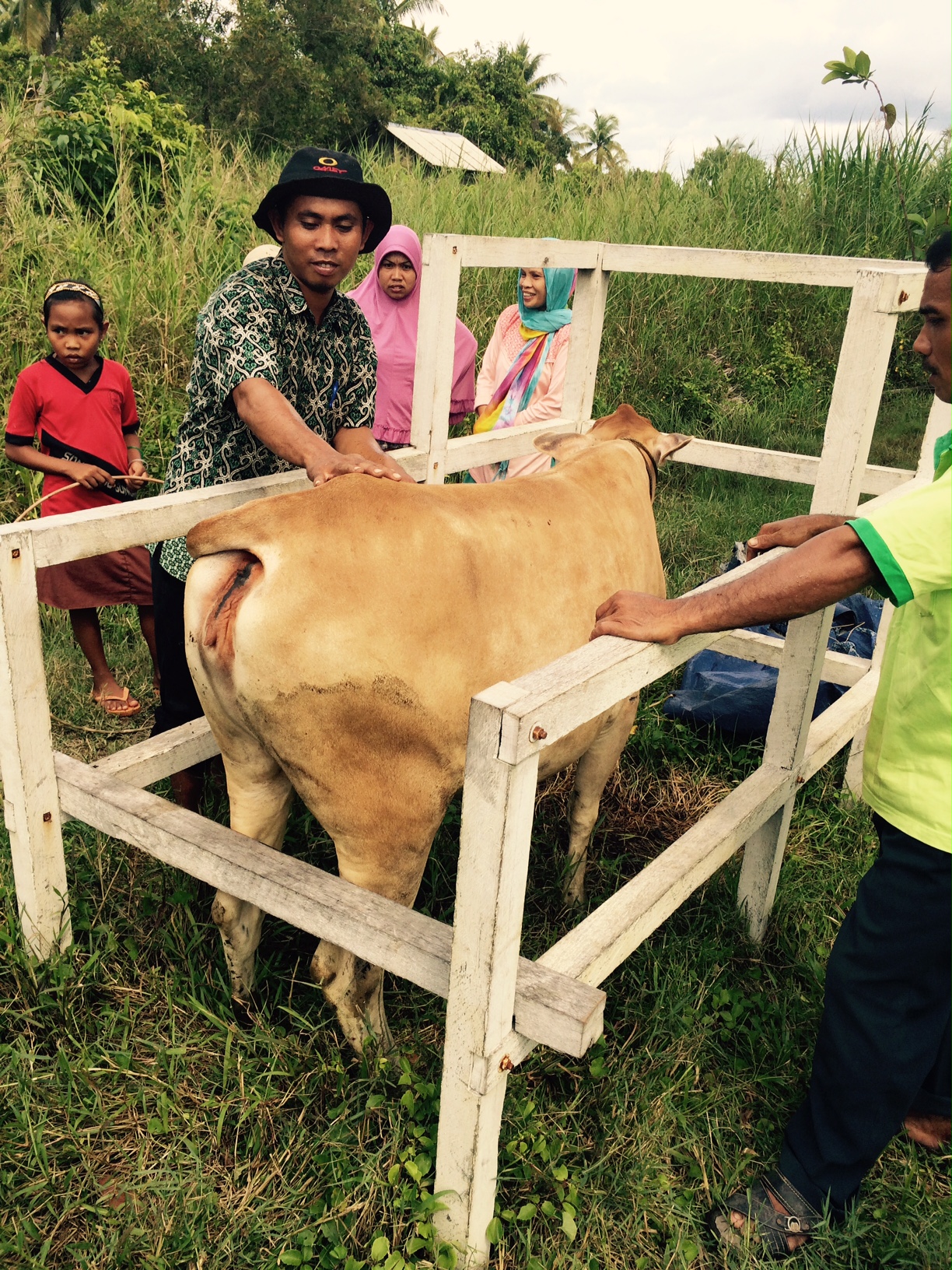How do healthy goats and cattle save orangutans from extinction? It’s all about deforestation, specifically illegal logging. Health in Harmony, Seneca Park Zoo’s conservation anchor in Borneo, reports a 68% decrease in illegal logging households for more than six years. This impressive accomplishment rings true as we have spent six days meeting Farmers’ and Widows’ groups investing in and relying on revenue generated from healthy cattle and goats. Such revenue includes highly productive organic farming from composted manure as well as meat production.
Highly reproductive goats (especially healthy twin kids) underscore the benefit of enhancing animal health & husbandry. Training has expanded formally with use of the FAMACHA card. Pinker color to conjunctival mucous membranes under lower eyelid indicates anemia is not a health concern. New training in selectively administering oral de-wormer may decrease parasite loads in overall herd of approximately 250 goats.
As Ibu Setiawati and Jilli implement their new health monitoring and treatment practices, we look forward to returning next year for more good news. Thank you Seneca Park Zoo donors for supporting Health in Harmony, making a true difference for goats, cattle, villagers and orangutans.
Blog and photos by:
Dr. Jeff Wyatt D.V.M., M.P.H., Director of Animal Health and Conservation for the Seneca Park Zoo
Dr. Andrew Winterborn D.V.M., Seneca Park Zoo and University of Rochester veterinary alumnus; University Veterinarian, Queens University, Kingston, Ontario, Canada

